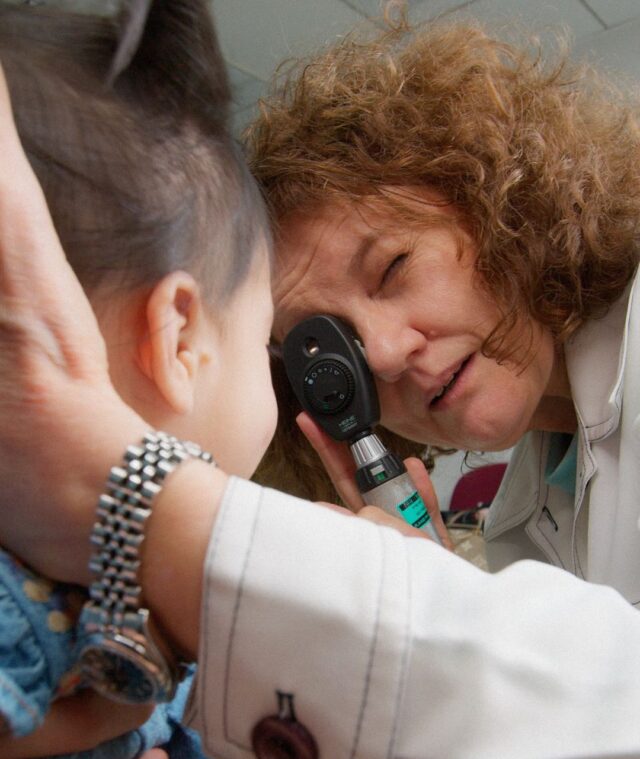Popular for the moniker “the silent thief of sight,” glaucoma is the second leading cause of blindness worldwide. This is primarily because its symptoms aren’t noticeable during the early stages.
While millions of people have it, only half actually know about it. To make matters worse, there are so many misconceptions circulating around the illness that it can be difficult to differentiate fact from fiction.
To help you avoid the disease or potentially manage it better, here are five myths about glaucoma causes, symptoms, and treatment you need to unlearn today:
Myth #1: Glaucoma is only one disease.
Although it goes by one common name, glaucoma is actually a group of diseases that damage the optic nerve and inadvertently lead to blindness.
There are several types of glaucoma that vary in severity, cause, and other characteristics. Normal-tension glaucoma, for example, entails optic nerve damage despite “normalcy” in eye pressure – a condition with an unknown cause that still baffles experts today. False low or “normal” readings confuse practitioners who do not rule out contributing features of the eyes.
On the other hand, optic nerve damage due to incomplete or incorrect development of the drainage canals in the eyes is diagnosed as congenital glaucoma.
The two most common types of glaucoma are angle-closure glaucoma (ACG) and primary open-angle glaucoma (POAG).
Secondary Glaucoma might follow eye diseases and treatments for diseases elsewhere such as Steroid / Cortisone eye drops or medications.
Angle-Closure Glaucoma (ACG) – Less common, but has symptoms.
In ACG, a build-up of eye pressure occurs due to the closure of the angle formed by the iris and cornea. This results in optic nerve damage and vision loss – and quicker than POAG (See later).
This type of glaucoma can occur slowly or suddenly and can come with the following symptoms:
- Hazy or blurry eyesight
- Seeing rainbow-colored halos around lights
- Eye pain that may or may not be accompanied by nausea
- Vision loss
Primary Open-Angle Glaucoma (PAOG) – Majority of Glaucoma, less symptoms.
With PAOG, the eye’s drainage canals gradually become blocked, increasing the internal pressure in the eye. Although this damages the optic nerve in the process, it shows no warning signs or symptoms early on. This is why patients with PAOG could develop peripheral vision loss gradually without initially noticing it.
Myth #2: Only the elderly can experience glaucoma.
While age does increase one’s risk of getting the disease, anyone can get glaucoma, no matter how old or young they may be.
Most types of open-angle glaucoma are age-related, but there are also other variants that affect even newly born babies, like congenital glaucoma.
Some children with other eye diseases may get secondary glaucoma. The same is also true for adults, especially those with an eye ailment called uveitis.
People aged 20 to 50 years old can also develop other forms of the disease, like pigmentary glaucoma.
Aside from age, race can also be a factor. Those of African-American descent are particularly susceptible to develop the disease at a young age, while the risk of inheriting it rises if you are related to Latino or African-American races. Scandinavians can develop a separate type of POAG Glaucoma.
Other chronic diseases such as diabetes, sickle cell anemia, or cardiovascular ailments and eye injuries also increase the probability of a person developing this eye disease.
Myth #3: Glaucoma symptoms are noticeable early on.
As mentioned earlier, glaucoma is known as the “silent thief of sight.” This is because symptoms don’t appear during the early stages of the condition, leaving many patients unable to prevent its progression.
Open-angle glaucoma, for example, has virtually no symptoms during its early stages. In contrast to what most people think, increased eye pressure doesn’t always come with pain.
Plus, it starts with the loss of peripheral vision (or side vision), which is not immediately noticeable. This is because, in many cases, the ailment develops rapidly with one eye, giving the other eye time to compensate for the other eye’s defects.
Even after the disease reaches the point where both eyes have advanced peripheral vision loss, the patient may still not notice it. This is why getting a regular eye exam is vital in catching glaucoma before it gets worse. All persons older than 40 should thus be screened for Glaucoma.
Myth #4: You can’t get glaucoma if no one in your family has it.
As mentioned earlier, being related to people with glaucoma (or even descending from an at-risk race) can increase your risk of developing it. However, it is not true that you can’t develop the illness when no one in your family has it. Combinations of genes may matter.
Many patients with this disease are the only ones in their family diagnosed with the ailment. In most cases, this is because not every member of the family was properly examined to get such a diagnosis.
Remember that glaucoma often comes without warning. If you have glaucoma, your relatives could develop the disease, too, so it is important for those diagnosed to share it with their family, so that they can get to be screened too..
Myth #5: There is no stopping blindness once you have glaucoma.
If you ignore the symptoms (if you have any) and fail to keep your appointments with your eye doctors, glaucoma can indeed cause blindness.
Glaucoma can remain undetected for a long time. So instead of waiting for matters to get worse, it would be best to visit an eye doctor for a regular check-up, especially if older than 40.
If diagnosed early, glaucoma can be treated by lowering intraocular pressure. Depending on your condition, you can use prescription eye drops.
You can also undergo laser eye surgery or oral treatment, or a combination of these.
When the eye(s) do not respond well enough to either of these options, more involved Filtration surgery may be needed.
Distinguish Fact from Fiction
It’s easy to get incorrect information about glaucoma without proper guidance from a licensed eye doctor. Unlearn these common misconceptions about the disease and make sure you have your eyes checked regularly.
Book an appointment with us today and learn about the state of your eyes’ health to avoid silent eyesight thieves like glaucoma.








